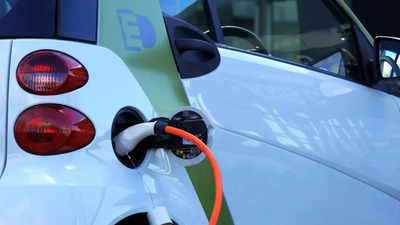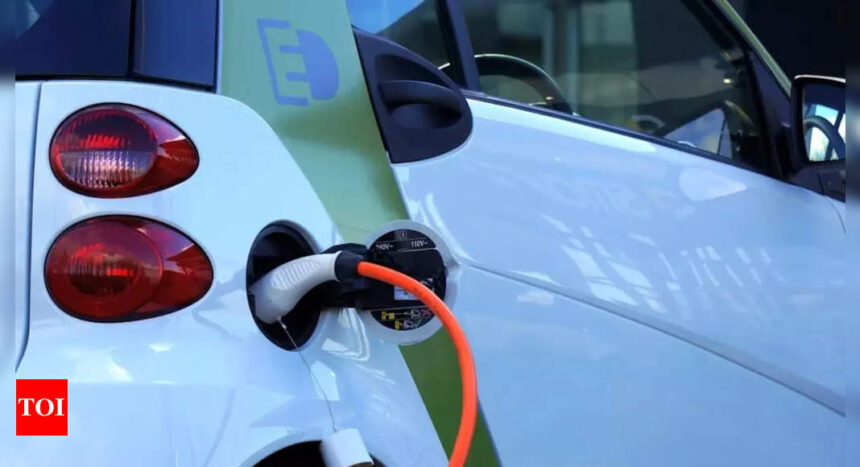
This article was written by Alok Kumar, former Union Power India Secretary and Director with The Lantau Group now.
“Sustainable development is a fundamental break that will turn the whole deck,” said French businessman François-Henri Pinault, acknowledging the challenges associated with the transition to green technology, especially in terms of affordability and import dependency for developing countries. However, realizing the full potential of this opportunity shows that these countries are ready to lead the industry and shape the future.
Electric mobility is one technology that holds great promise for India. It provides a viable solution to reduce oil imports through local renewable energy while generating significant employment opportunities. According to recent government estimates, the electric vehicle (EV) industry is expected to contribute to overall economic growth by creating 50 million direct and indirect jobs by 2030, along with 10 million. EV on the road during the same period. Another report shows that the EV industry will attract $6 billion in 2021 and is expected to reach $20 billion in 2030.
India has the potential to transition to electric mobility quickly, as motor vehicle ownership is about 60 per 1,000 people, compared to 230 in China and 700-800 in developed countries. The country also has abundant solar and wind resources to generate green electricity, a strong auto parts industry, and plenty of young workers eager to be trained for new job roles. Many of these jobs will emerge in areas such as servicing, maintenance, EV charging, and battery recycling.
Tata Curvv Coupe EV first drive review Big, stylish, loaded… but better | TOI Auto
Where do we stand today? EV penetration in India, measured as the percentage of EV sales relative to total light vehicle sales—including passenger vehicles and light commercial vehicles—is only about 1.1% by 2022, compared to 17.3% in other Asian countries. In China, EVs account for nearly 41% of the new car market, with battery electric vehicles accounting for 26.4%. India is still heavily dependent on imports of battery cells, raw materials, and other components for EVs.
The government has prioritized the promotion of electric mobility as a key strategy for energy transition and local manufacturing growth. At FAME The scheme was launched in 2015, followed by the Production Linked Incentive (PLI) scheme for the automotive sector, including EVs, in 2021. In addition, another PLI scheme was introduced in the same year to support the manufacturing of advanced chemical cells for local batteries. GST on EVs is set at just 5%, compared to 28% for hybrid and CNG vehicles, and 49% on ICE vehicle. Special tariffs, without cross-subsidy burdens, have also been established for electricity supplied to public charging stations for EVs, and many state governments have waived road tax for EVs.
However, the sector faces challenges, including high upfront capital costs, concerns over inadequate charging infrastructure, and slow local manufacturing. Recognizing the potential for clean economic growth, the government has introduced several initiatives to increase its focus. However, India needs to speed up its efforts to overcome this congestion, as current speeds are a significant obstacle even though more than 90% of EV users charge their vehicles at home. Improving the charging infrastructure, in terms of the number of chargers and accessibility, as well as the speed of charging, is very important. Charging infrastructure has grown over the past few years, rising from more than 6,000 in March 2023 to approximately 15,000 today, and the outlook for the next few years remains promising.
The new PM E-DRIVE initiative has been launched at a cost of INR 109 billion over two years – higher than the INR 100 billion allocated over the following five years. FAME II. It only targets EVs, unlike FAME, which also includes hybrid vehicles, and sets the course for the future of mobility powered by EVs. providing subsidy support for two- and three-wheelers and electric buses, with a stronger emphasis on adding new charging stations.
The Ministry of Petroleum & Natural Gas is in the process of deploying 22,000 public EV charging stations, expected to be installed by December 2024. Public sector oil companies and private sector players like Tata Power, Jio BPand Power Adani has announced plans to install around 200,000 chargers. Several public and private sector projects are underway, supported by government schemes aimed at changing the composition of the grid. The PM Suryodaya scheme, promoting household participation in this transition, is gaining traction.
The new initiative aims to support a total of 88,000 new fast charging stations—22,100 for four-wheelers, 48,400 for two- and three-wheelers, and 1,800 for e-buses. It also seeks to support a total of 88,000 new fast charging stations—22,100 for four-wheelers, 48,400 for two- and three-wheelers, and 1,800 for e-buses. It aims to increase the two-wheeler and three-wheeler market share to 10% and 15%, respectively, by 2026. The government has also launched a scheme at a cost of INR 34 billion to create a payment security mechanism to support it. e-bus induction in state transport companies.
The Ministry of Manpower’s revised guidelines for expanding charging infrastructure emphasize the importance of charging infrastructure in all potential locations, including high-rise residential buildings, and promote open communication protocols to enable EV charging interoperability. He also ordered new connection providers with distribution utilities to set up charging stations, offer 30% discount rates for charging during solar hours, and encourage new technologies like vehicle charging.
Private players are also developing sales models to overcome the hurdle of higher initial capital costs. Recently, a joint venture led by an Indian industrial house announced a ‘battery as a service’ model, charging based on the distance traveled, which reduces the initial cost by about 40%, and includes a buyback price of up to 60% after three years or 45,000. km, apart from free charging for one year.
There is renewed interest in increasing local content in EVs sold in India. Several foreign manufacturers have shown interest in setting up facilities here. Some manufacturers who don’t care about EV technology have now stepped in and announced new electric models that will be launched soon. PM E-DRIVE also focuses on phased manufacturing plans, and adheres to stricter local content requirements to get subsidies under the scheme.
India’s ambition to become a significant global player in EV manufacturing must be underpinned by a strategy that prioritizes domestic sales. This requires addressing critical gaps, such as insufficient charging infrastructure and providing sustained support to local manufacturers. Shifting attention to hybrid technology – which is only ancillary and has no significant long-term value in combating climate change – will hinder the country from reaping the benefits of electric mobility.
Disclaimer: The views and opinions expressed in this article are solely those of the original author and do not represent those of The Times Group or its employees.




